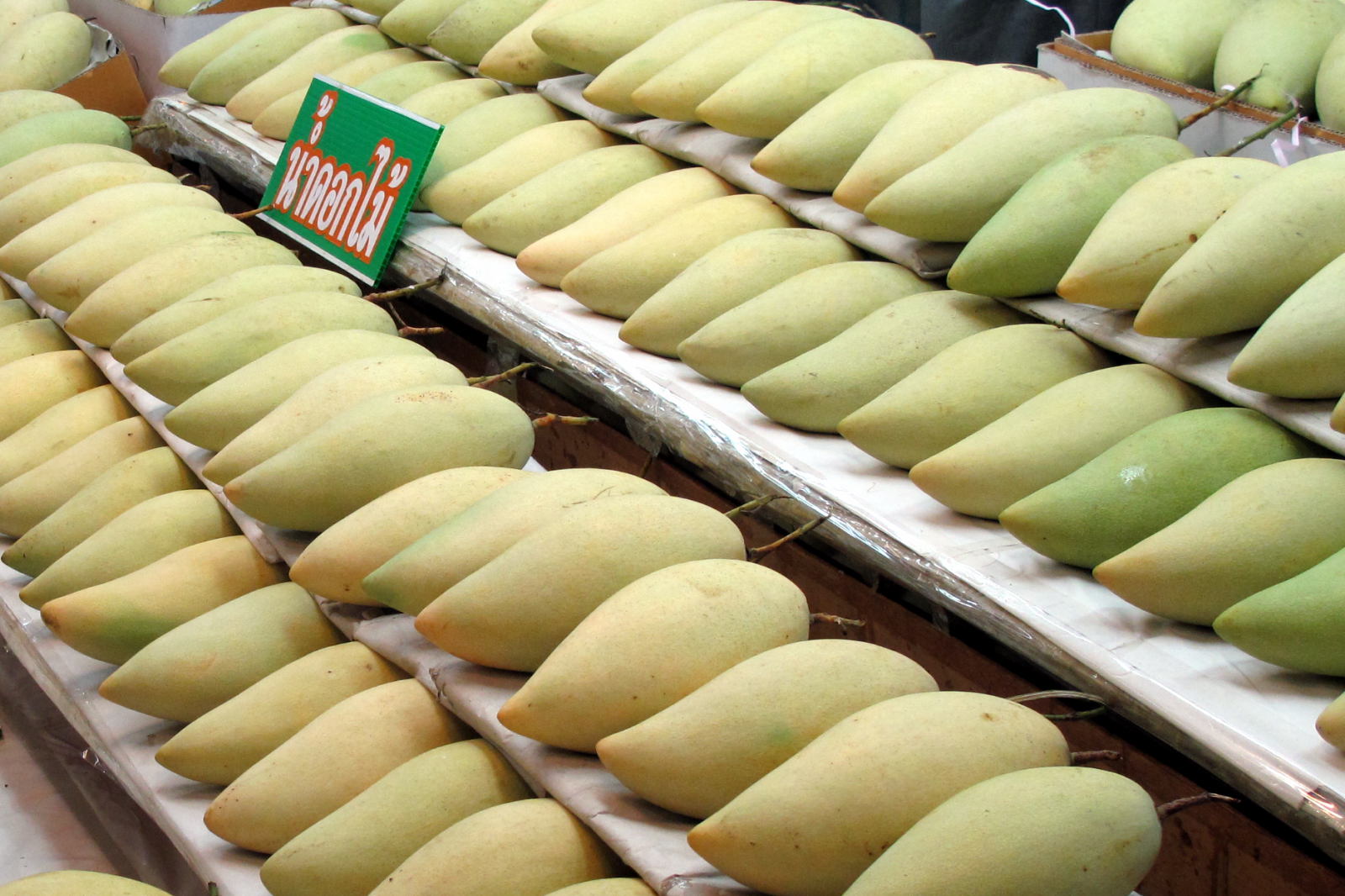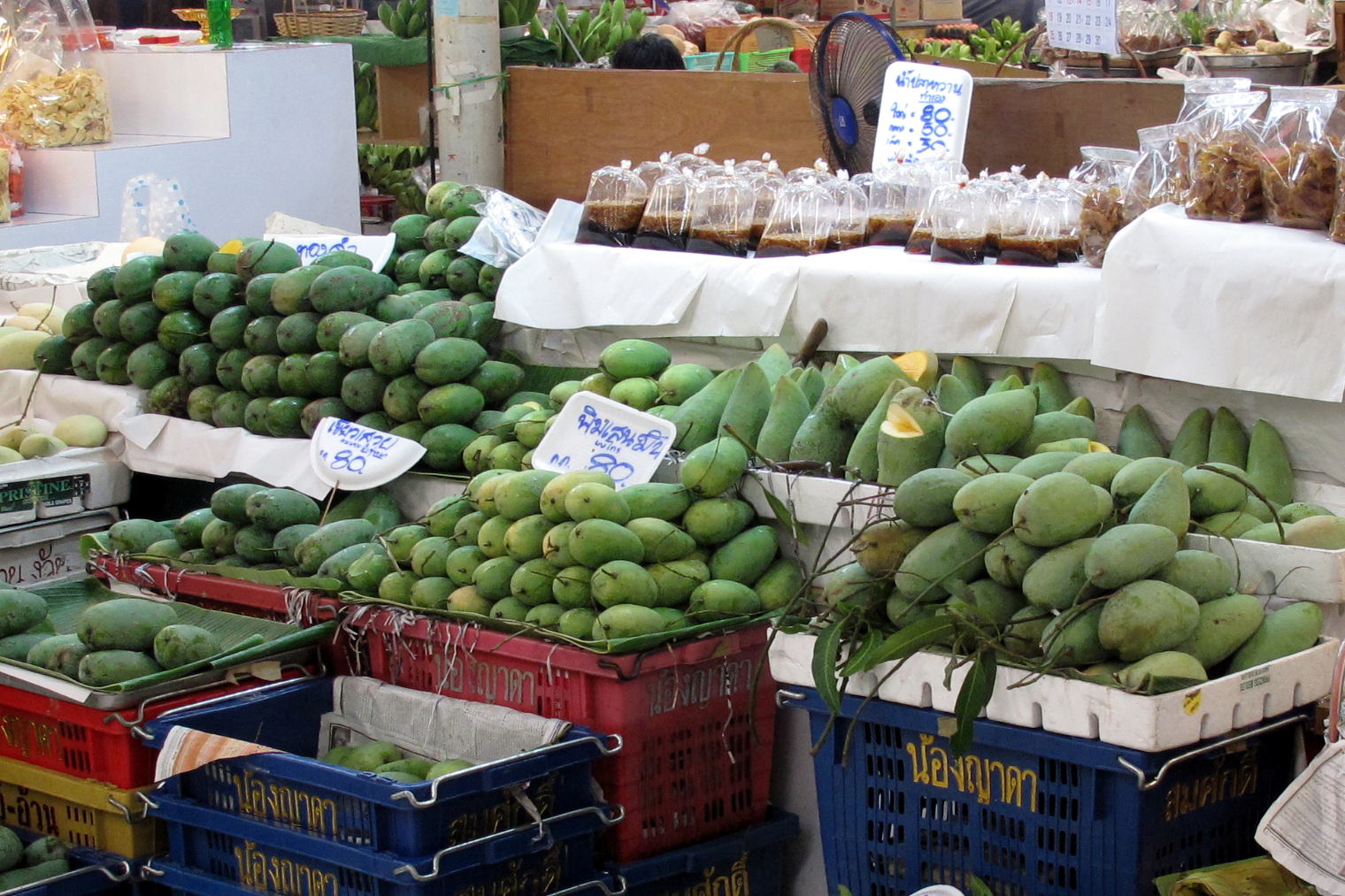Mangoes are perhaps one of the most popular fruits among Thais. They are available in a stunning variety in Thailand, from the sweet yellow mangoes commonly found in the west, to tart green mangoes that find their way into many Thai dishes, both sweet and savory.

All mangoes have more or less the same flat tear-drop shape. The thing I’m always fascinated with about the mango is the wide flat pit that extends to just below the skin. The flesh of the mango is built up on either side of the pit rather than spread evenly around it as with most other fruits with a core, such as apples, guavas and pears. As one cheeky author of Wikipedia put (before being removed), “Some people believe that the safest way to eat a mango is in the bathtub, or sitting naked on a deserted beach, or even on top of a mango tree itself.” Indeed, fresh ripe yellow mangoes are a rather messy affair to peel and slice.
The most popular yellow mangoes have a short season, with the best fruits available only from about March to May, although in recent years various tricks have been employed to extend this to the point where some form of yellow mangoes are available year around. These will be eaten fresh, with the most popular and traditional method being fresh cut mangoes served with sweet sticky rice. At the height of the yellow mango season in May, Chiang Mai holds a Mango Fair in Buak Hat park at the south-western corner of the old city. There’s lots of mango eating of course, and no festival would be complete without a Mango Queen.

Green mangoes are available for a longer season, from as early as October up to May. Green mangoes generally have a tart taste with a crispy texture. They can be quite similar to green apples in both taste and texture; and like green apples, if you eat too many you will be sure to get a tummy ache. Green mangoes are eaten fresh, sometimes with a sticky brown sweet and salty sauce. Green mangoes also find their way into salads and other savory recipes.
The variety of mangoes available in Thailand points to the fact that the fruit originated in South and South-East Asia. They have obviously been cultivated for quite some time. The Hindu Vedas, written about 4000 B.C., refers to mangoes as “the food of the gods” and Buddha was presented with a mango grove in which to rest. The word mango comes from a Portuguese corruption of the Tamil word for the fruit, man-kay. The curved tear-drop shape of mangoes is said to be the inspiration for the paisley pattern in Indian textiles. From Asia, the colonial powers spread mangoes throughout the world. Today, mangoes are said to be the most widely eaten fresh fruit in the world. Mangoes contain significant amounts of vitamins A, B and C.